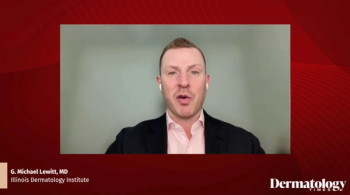
An Overview of Vitiligo
Expert dermatologists Seemal Desai, MD, FAAD, and William Damsky, MD, PhD, provide an overview of vitiligo, as an autoimmune disorder, and its prevalence.
Episodes in this series

Transcript:
Seemal Desai, MD, FAAD: Welcome to this Dermatology Times® DermView presentation titled, “Innovations in the Treatment of Vitiligo.” I’m Dr Seemal Desai. I’m a board-certified dermatologist in private and academic practice in Dallas, Texas. I’m the founder and medical director of Innovative Dermatology and serve on the faculty at University of Texas Southwestern Medical Center, where I teach residents and see patients. I’m joined today by a friend and colleague, Dr William Damsky, who is an assistant professor in the Department of Dermatology and Dermatopathology at the Yale School of Medicine in New Haven, Connecticut.
In our discussion today, we’ll focus on an overview of vitiligo, with clinical presentation, nuances, new research that’s out there, and diagnostic and therapeutic management. We’ll also discuss goals of therapy with the available items in our treatment armamentarium, but most importantly, what are the new advances that Bill and I are most excited about for patients with vitiligo based on our expertise in clinical research? Welcome, and let’s get started. Bill, it’s great to be with you as well.
William Damsky, MD, PhD: Likewise. It’s a pleasure to talk with you today.
Seemal Desai, MD, FAAD: Why don’t we set the stage for our audience and our viewers and just tee it up with, what is vitiligo? We may have people watching us today who don’t see a lot of these cases. Obviously, my bias is, I do this all day long in my pigment practice, and you’re actively involved with us in clinical research, but what is vitiligo? What causes it? How common is it? Tell us your thoughts.
William Damsky, MD, PhD: Thanks for the question. Really at its heart, vitiligo is an autoimmune disease. Autoimmune diseases are diseases of the immune system where the immune system is hyperactive, meaning that it goes after targets that probably it shouldn’t. The target of the immune response in vitiligo is the cell type of melanocytes. Melanocytes are normal pigment-producing cells in the skin, and when they’re recognized and eliminated by the immune system, they no longer produce pigment. This leads to clinical patches of depigmentation as we see in vitiligo. Vitiligo is actually quite common. Estimates worldwide suggest that 1 in 200, or up to 1 in 50 individuals are affected by the disease. In terms of the cause, really, the root cause isn’t known, but we tend to think of it as an autoimmune spectrum disorder, which probably reflects a combination of genetics, environmental exposures, and potentially, even a little bit of bad luck. Clinically, I think many people may be familiar with the presentation of vitiligo. We look for depigmented patches of skin, they’re typically symptomatic, and that’s usually what the patients will come to see us for.
Seemal Desai, MD, FAAD: I agree. It’s interesting because this disease can not only have a profound impact on the patient but also on the family who’s dealing with this, especially for the pediatric and adolescent patients we see. And of course, we’ll dive into more of that, I’m sure, later in our discussion together, especially given some of the cultural, social, and psychological influences of the disease. Let me just follow up with you on one important point, do you find your patients ever complain about certain symptoms associated with vitiligo, aside from the obvious loss of [skin] color? Are there any specific skin signs or symptoms that you wanted our listeners to be aware of?
William Damsky, MD, PhD: That’s a great question. I appreciate you asking it. In general, I feel like patients don’t typically present with symptoms, such as itching or burning or pain; itching may be a symptom, sometimes patients have concomitant atopic dermatitis and those patients may be a little bit itchier than the rest. Something that really seems to bother patients, and this is true of vitiligo but it’s also true about other skin disorders, is it’s really hard to go about normal daily life. It may be hard to expose certain parts of the skin. If the face is affected, it may be impossible to shield it.
Transcript edited for clarity.
Newsletter
Like what you’re reading? Subscribe to Dermatology Times for weekly updates on therapies, innovations, and real-world practice tips.























